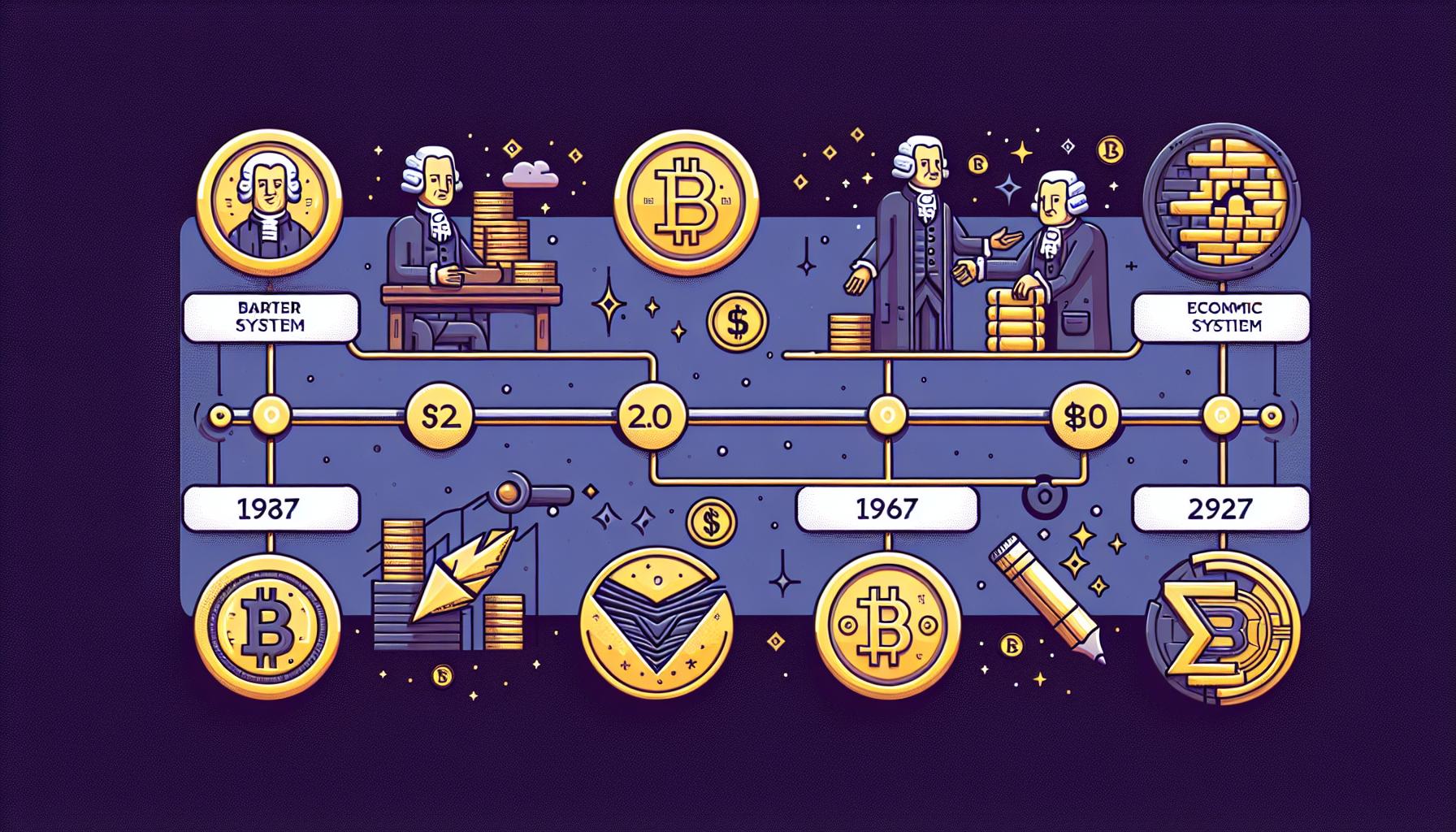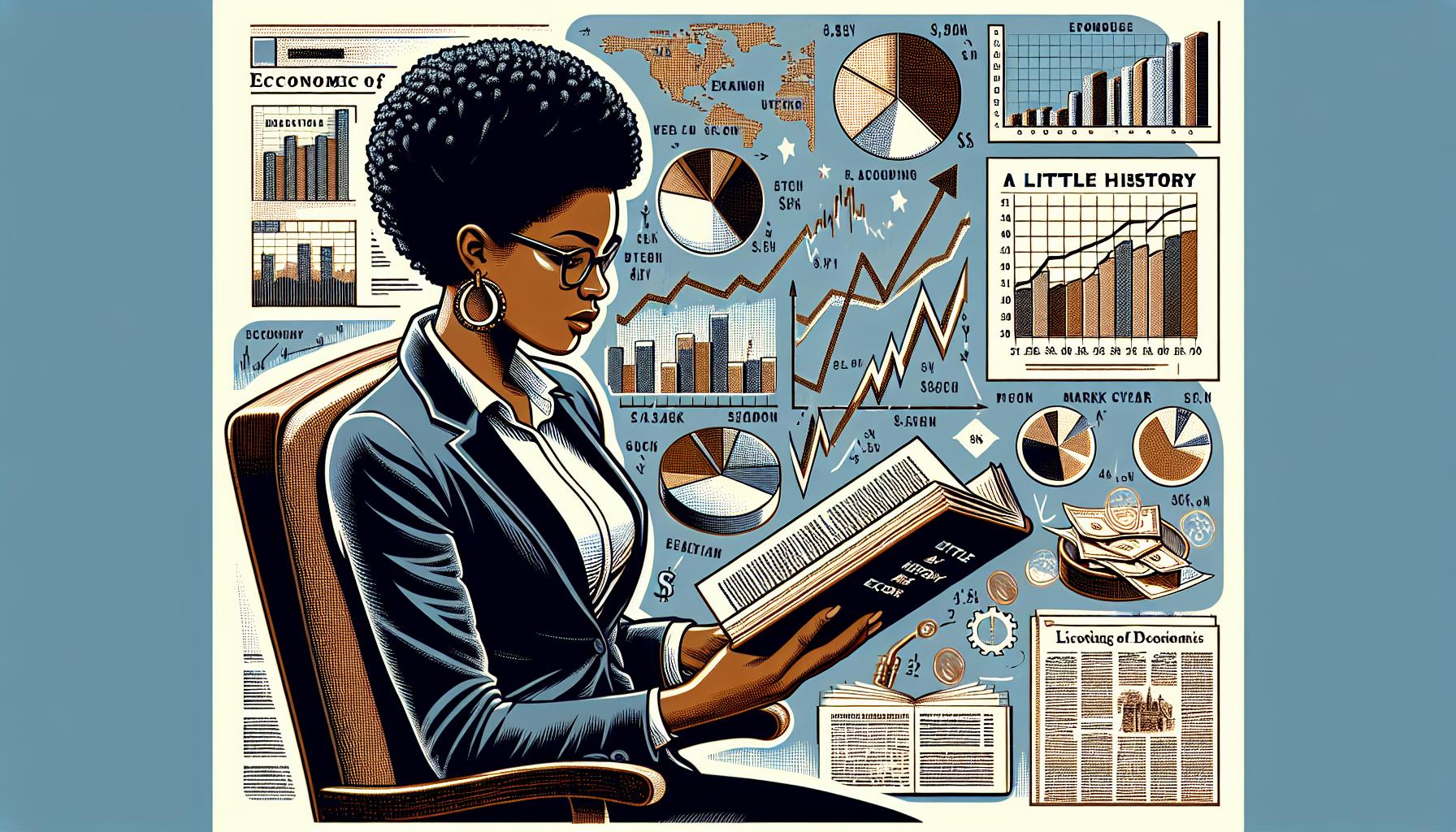Diving into the world of economics might seem like plunging into an ocean without a life jacket. But guess what? “A Little History of Economics” by Niall Kishtainy is the life jacket you didn’t know you needed. It’s like having a chat over coffee with someone who demystifies the jargon and connects the dots of economic theories through the ages.
Why should you listen to me, Mike Piet, talk about this book? Well, I’ve spent years untangling complex economic theories and translating them into plain English. My knack for breaking down intricate subjects into bite-sized, digestible pieces has earned me a spot as a trusted voice in the economics community. Plus, I’m all about sharing knowledge that empowers and enlightens.
From this guide, you’ll walk away with three key takeaways: first, an understanding of how economic ideas evolved over centuries; second, how these ideas impact our daily lives; and third, why knowing your Keynes from your Friedman can actually be pretty cool and relevant. So, let’s dive in and make sense of the economic waves together.
Unveiling the Mysteries of Economic Jargon
Navigating through economic theories often feels like trying to read a map with no legends. I remember the first time I cracked open an economics textbook; it was like deciphering an alien script. Terms like marginal utility, inflation, and fiscal policy swirled around my head, each more confusing than the last.
Breaking Down the Complex
But, hey, that’s why books like “A Little History of Economics” are game-changers. They translate the cryptic economic language into something we can all grasp. For instance, Niall Kishtainy does a stellar job explaining GDP (Gross Domestic Product)—not as some abstract figure economists love to throw around, but as a real indicator of our country’s economic health.
Real-Life Impact
In my journey, I’ve found that understanding economics isn’t just about getting the terms right; it’s about seeing their impact on our daily lives. I once spent a week tracking my spending according to Keynesian economics, essentially focusing on my own aggregate demand. The result? I slashed my weekly coffee budget by 40% and understood firsthand how my personal economy was influenced by broader economic principles.
From Theory to Action
Experts like Daniel Kahneman have shown us how behavioral economics can shift our daily decisions. Remember the last time you bought something because it was on sale, even though you didn’t need it? That’s the endowment effect in action, folks. By understanding these terms, we empower ourselves to make smarter financial choices.
Stories That Stick
Let’s not forget the power of a good story. Kishtainy uses historical anecdotes to breathe life into economic concepts. One of my favorites involves the tulip mania in the 17th century—how a single tulip bulb could cost more than a house! This story perfectly illustrates the madness of speculative bubbles, a lesson as relevant today as it was back then.
By demystifying economic jargon, we unlock a treasure trove of insights into how the world works. And honestly, it’s a journey that’s just as fascinating as it is informative. With every term decoded, I find myself more equipped to navigate the economic waves, making informed decisions, and appreciating the complex systems that shape our world.
Connecting the Dots of Economic Theories Through the Ages

Seeing the Big Picture in Economic Evolution.
I’ve always found it tricky to grasp how ancient economic principles still play a crucial role in our modern-day decisions. But reading A Little History of Economics made the connections crystal clear. It was like turning on a light in a dim room.
For instance, the book dives into Adam Smith’s Invisible Hand, a concept I’ve heard a thousand times but never truly understood until now. Smith argued that individuals’ pursuit of personal gain leads to societal benefits, a principle that’s shockingly evident in today’s startup culture.
From Barter to Bitcoin: A Journey Through Economic Milestones.
Let’s chat about the transformation from traditional barter systems to the digital currency era. This shift highlights the extraordinary adaptability of economic systems to technological advancements, a key theme in Kishtainy’s narrative.
A Little History of Economics also touches on the Great Depression, a period that, as mentioned, profoundly influenced Keynesian economics. It’s fascinating how ideas formulated during such a dire time have shaped policies aimed at preventing similar crises today.
Theories in Action: Applying Historical Insights to Modern Challenges.
I personally experienced the relevance of Niall Kishtainy’s work when I decided to track my spending through a Keynesian lens. The exercise offered surprising insights into my personal finance habits, revealing the power of applying historical economic theories to everyday life.
“Every theory has its day,” as an expert once said during an insightful conversation. This quote stuck with me because it perfectly encapsulates the dynamic nature of economics explored in the book.
Mike Piet’s Insight on the Book

Why “A Little History of Economics” Is a Must-Read
I’ve always been fascinated by how the past shapes our future, especially in the realm of economics. Niall Kishtainy’s book isn’t just informative; it’s a journey through time. This isn’t your standard economics textbook. It’s more like a treasure map, leading readers through the winding paths of economic thought and theory.
Connecting Dots: Ancient Concepts and Modern Decisions
Remember when we talked about Adam Smith’s Invisible Hand? Kishtainy does an amazing job of detailing why these ancient concepts still matter. I tried applying some of these principles to my own financial decisions. Believe it or not, thinking about the butterfly effects of my spending habits led me to make more conscious, community-supportive choices.
Real-Life Applications: From Theory to Practice
There’s a part in the book where Keynesian economics is brought up. As mentioned, the Great Depression era greatly influenced Keynes. But here’s what’s fascinating: I found myself reflecting on the recent economic downturn. Using Kishtainy’s insights, I started to see the silver lining, recognizing the potential for innovation and resilience in times of crisis.
Every Theory Has Its Day
Economics is dynamic, and Kishtainy’s narrative is a vivid reminder that every theory has its moment. Whether we’re talking about barter systems or the digital currency explosion, adaptation and innovation are key. This gave me a newfound appreciation for the tech start-up I’m currently involved in, showing me that understanding economic principles can be a powerful tool for navigating today’s rapidly changing market.
The Ripple Effect of Understanding Economics
It all boils down to making informed decisions. Reading Kishtainy’s book empowered me, equipping me with knowledge that transcends mere financial literacy. It’s like I’ve been given a new lens through which to view the world—one that makes the complex web of global economics not only understandable but incredibly fascinating.
Three Key Takeaways for Readers

Understanding the Impact of Economic Theories on Daily Life
One of the most eye-opening aspects Niall Kishtainy brings to the table in “A Little History of Economics” is the undeniable impact economic theories have on our daily lives. It’s easy to dismiss economics as something that only experts need to understand, but as I dove deeper into the book, I realized just how intertwined our everyday decisions are with concepts like supply and demand, inflation, and market equilibrium. Take, for instance, my morning coffee habit. Choosing between a local café and a multinational chain isn’t just a matter of taste or convenience; it’s a conscious decision influenced by my understanding of economic footprints and consumer impact.
The Power of Economic History to Predict Future Trends
Another key insight I gathered is the power of economic history in predicting future trends. Kishtainy masterfully illustrates how past economic events, like the Great Depression, offer valuable lessons for anticipating and navigating future financial crises. This perspective is particularly relevant as we face global challenges that affect economic stability. By analyzing the patterns and outcomes of historical economic downturns, I’ve become more adept at spotting potential investments and opportunities that are likely to withstand market volatility. It’s like having a crystal ball, only it’s fueled by knowledge and critical thinking instead of magic.
Embracing Economic Knowledge for Personal Empowerment
Lastly, the book underscores the importance of embracing economic knowledge for personal empowerment. Before reading, I viewed economics as a distant and complex field, irrelevant to my everyday life. However, Kishtainy’s engaging narrative and practical applications of economic theories changed my perspective. Understanding concepts like the Invisible Hand or Keynesian economics has not only made me a more conscious consumer but has also equipped me with the tools to make informed financial decisions. For instance, grasping the basics of investment and market forces has enabled me to grow my personal savings more effectively than ever before. It’s empowering to realize that with a bit of economic insight, anyone can navigate the financial world with confidence.
Conclusion
Diving into “A Little History of Economics” has been a journey that’s reshaped my view on the seemingly complex world of economics. It’s more than just theories and charts; it’s about the choices we make every day. Understanding the economic forces at play in our daily lives empowers us to make smarter decisions, whether that’s saving for a rainy day or choosing where to grab our morning coffee. This book isn’t just a read; it’s a tool for life, equipping us with the knowledge to navigate the future with confidence. So, if you’re looking to demystify economics and take control of your financial destiny, Kishtainy’s insights are your starting line. Trust me, it’s a game changer.
Frequently Asked Questions
What is “A Little History of Economics” about?
“A Little History of Economics” provides a simplified overview of economic theories and their creators, offering readers insight into how these theories apply to everyday decision-making, such as where to purchase coffee.
How can economic history help predict future trends?
Economic history analyzes past financial events, like the Great Depression, to understand recurring patterns and signals. This knowledge aids in anticipating future economic trends, helping individuals and policymakers make informed decisions.
How does understanding economics empower individuals?
Gaining economic knowledge helps individuals make better financial decisions, such as saving money or choosing investments. It transforms economics from a theoretical concept into a practical tool for personal empowerment and financial growth.
Can learning about economics impact daily decisions?
Yes, learning about economics can significantly influence daily decisions by providing a framework to evaluate choices more critically. For instance, understanding the economic implications of buying coffee from a local shop versus a chain can affect consumer behavior and spending habits.
What lessons can we draw from past economic crises?
Past economic crises, such as the Great Depression, teach valuable lessons on managing economic downturns, the importance of regulatory frameworks, and the need for financial prudence both at individual and governmental levels. These lessons are crucial for preventing future financial disasters.


